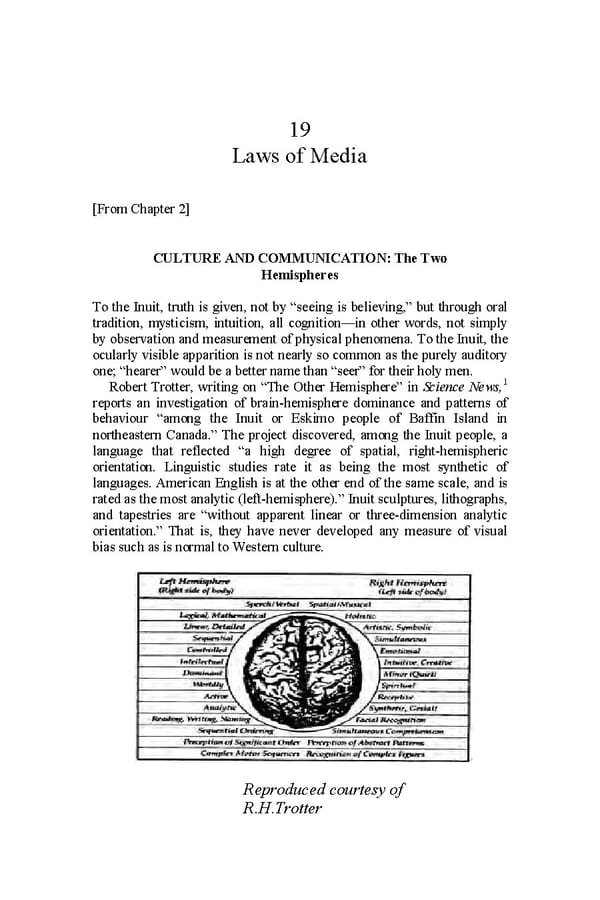19 Laws of Media [From Chapter 2] CULTURE AND COMMUNICATION: The Two Hemispheres To the Inuit, truth is given, not by “seeing is believing,” but through oral tradition, mysticism, intuition, all cognition—in other words, not simply by observation and measurement of physical phenomena. To the Inuit, the ocularly visible apparition is not nearly so common as the purely auditory one; “hearer” would be a better name than “seer” for their holy men. 1 Robert Trotter, writing on “The Other Hemisphere” in Science News, reports an investigation of brain-hemisphere dominance and patterns of behaviour “among the Inuit or Eskimo people of Baffin Island in northeastern Canada.” The project discovered, among the Inuit people, a language that reflected “a high degree of spatial, right-hemispheric orientation. Linguistic studies rate it as being the most synthetic of languages. American English is at the other end of the same scale, and is rated as the most analytic (left-hemisphere).” Inuit sculptures, lithographs, and tapestries are “without apparent linear or three-dimension analytic orientation.” That is, they have never developed any measure of visual bias such as is normal to Western culture. Reproduced courtesy of R.H.Trotter
 Essential McLuhan Page 364 Page 366
Essential McLuhan Page 364 Page 366